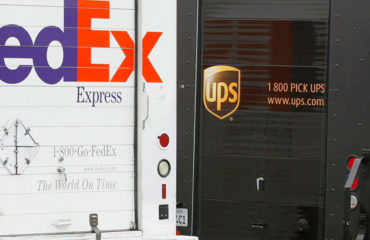8 things your returns policy must do for customers
Retailers are capitalizing on record-breaking online and mobile e-commerce sales (last year U.S. online shoppers spent $2 billion on Cyber Monday alone). Smart e-tailers are going after this ever-growing pie with a variety of tools ranging from downloadable smartphone apps to the smart use of social media.
A well-thought-out returns policy seems to matter most to online shoppers.
But a well-thought-out returns policy seems to matter most to online shoppers, according to the 2014 UPS Pulse of the Online Shopper study, conducted by comScore.
Bala Ganesh, a UPS retail segment marketing director, shares eight ways the right returns policy can fuel better online sales:
1. Post the policy on your website. “Make your returns policy prominent,” Ganesh says. The 2014 comScore research shows that 66 percent of online shoppers look at a retailer’s returns policy before they make a purchase. “The easier it is to find the better, because it’s more likely the consumer will complete a purchase,” he says. “Best-in-class retailers, like Zappos, post it right on the landing page. You could be losing revenue if your returns policy is hard to find or difficult to understand.”
2. Include a return label with shipments. comScore research shows that receiving a preprinted return label is important to shoppers. “Some 52 percent said a return label right in the box with their original purchase was important to them,” Ganesh says. This was the third most important consideration for shoppers in the study (behind free shipping and a no-questions-asked returns policy).
3. If shipping with UPS, use Quantum View Manage® to track returns. Online shoppers prefer an automatic refund to their credit card when items are returned. “Tracking returns with Quantum View Manage helps a retailer speed up the process,” Ganesh says. “Once a return is in our system, they can go ahead and, in good faith, offer store credit or card refund.”
4. Decide who pays for return shipping. In the comScore study, 82 percent of shoppers said they would complete a purchase if the retailer either allowed free returns to a store or free returns via a prepaid label. “The percentage dropped to 45 when shoppers could return to a local store for free, but had to pay for return shipping,” Ganesh says. “Clearly, the cost of return shipping is something online shoppers take into consideration before making a purchase.”
In the study, online shoppers listed a hassle-free, no-questions-asked returns policy as the second most important consideration in making a purchase, only behind free shipping. (Read the Compass story about the full study results.)
5. Give shoppers as much information upfront as possible. “Good descriptions and detailed photographs are important, so the consumer knows what they are getting,” Ganesh advises. “If products are represented well on the website, a consumer is less likely to return them.” For example, one online retailer posts its models’ measurements and the sizes they are wearing, so consumers can more easily tell what size to order. “It’s best to set expectations like that, with as much detail as possible,” Ganesh says.
6. Provide as much flexibility as you can. If you have brick-and-mortar stores, let customers take returns to the store. “One of the top five hassles shoppers report is the inability to return to a local store,” Ganesh says. According to the comScore study, the most restrictive return policies (such as cannot return to a store and must pay return shipping) drop the likelihood of completing an online sale to just 20 percent.
7. Consider doing away with restocking fees. Restocking fees rank as the third highest negative issue that online shoppers face when returning purchases. Only being forced to pay for shipping or waiting too long for a credit or refund ranked higher. “Consumers really do not like restocking fees,” Ganesh says. “It feels like rubbing salt in the wound to them.”
8. Leverage your brick-and-mortar stores. “It’s customer-centric and an opportunity for a retailer to get additional sales,” Ganesh says. A shopper might prefer to return something to a store right down the street, since it is easier than shipping something back. “While in the store, maybe they will exchange the item rather than return it,” Ganesh says. “You can save the sale or upsell the consumer when you give them that opportunity. We see 43 percent of customers buy something extra when they pick up a ‘ship to store’ package, so it’s likely that retailers would see a similar uplift during in-store returns.”



